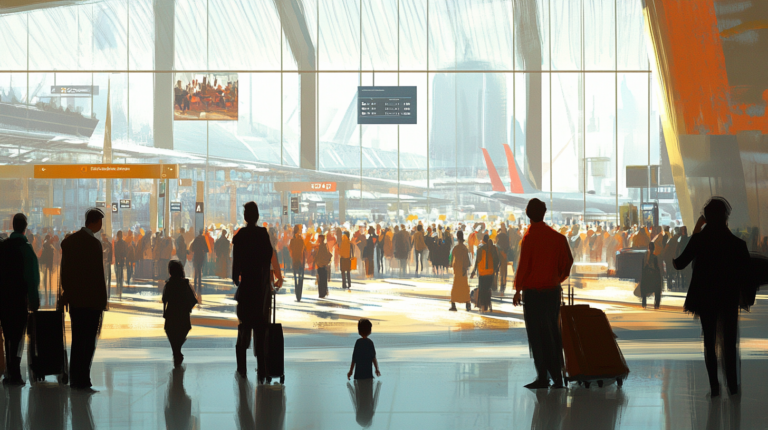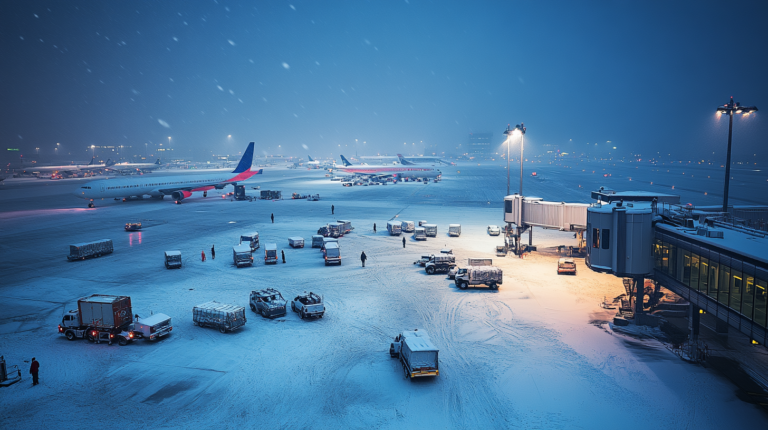Global Business Travel Simplified

I’ve always been fascinated by the thrill of international business travel. There’s just something about watching clouds drift by at 35,000 feet, knowing I’m on a mission to forge new connections and explore new markets. Over the years, I’ve noticed that the more prepared I am—from checking off the smallest detail to confirming a seat with a good view—the more I can relax and focus on building lasting professional relationships.
1. Confirm Travel Documents Early

When I’m planning a big trip, confirming my passport’s validity and any necessary visas is the very first thing I do. I’ve seen too many colleagues scramble at the last minute, sometimes missing flights or incurring hefty fees just because their paperwork wasn’t in order. Maintaining a checklist of key documents—passport, visa, vaccination certificates, and even work permits if required—can be a lifesaver.
According to the U.S. Department of State, nearly 60% of passport delays stem from travelers not meeting standard lengths of validity (usually six months beyond travel dates). This statistic alone reminds me that there’s no “too early” when it comes to these essential details. I personally try to check document requirements a couple of months in advance, so there’s plenty of buffer time for renewals. If I’m visiting anywhere in Asia or Africa, some destinations have very specific guidelines or additional forms, so I always verify with trusted sources like official embassy websites and confirm any necessary vaccinations well ahead of my departure date.
In my own experience, handling these tasks early is less stressful and more cost-effective. Those last-minute expediting services can skyrocket in price, and trust me, finding out your visa was denied right before boarding can ruin any travel plans.
2. Check Government Resources

One of my favorite ways to stay updated on security advisories and health alerts is to check official government portals. I prefer websites ending in .gov for reliable content, and I make sure the pages use HTTPS for added data protection. This extra layer of safety becomes more relevant when you’re providing personal information. If you’re also tracking local news on quarantine or entry requirements, these resources can give you the latest updates.
A recent study by the World Travel & Tourism Council found that 73% of business travelers rely on government travel advisories when making decisions about their itineraries. I find it comforting to have that official stamp of approval on whether a destination is safe or if I need specific gear. During trips to unfamiliar countries, I also look into customs regulations. Knowing what you can bring (and what you can’t) can save you big headaches at the airport.
In my experience, double-checking these sites has helped me avoid packing restricted items and missing crucial travel warnings. You’d be surprised how often a simple oversight—like not noticing a country’s new tax regulations—can affect your budget or timeline.
3. Plan a Detailed Itinerary
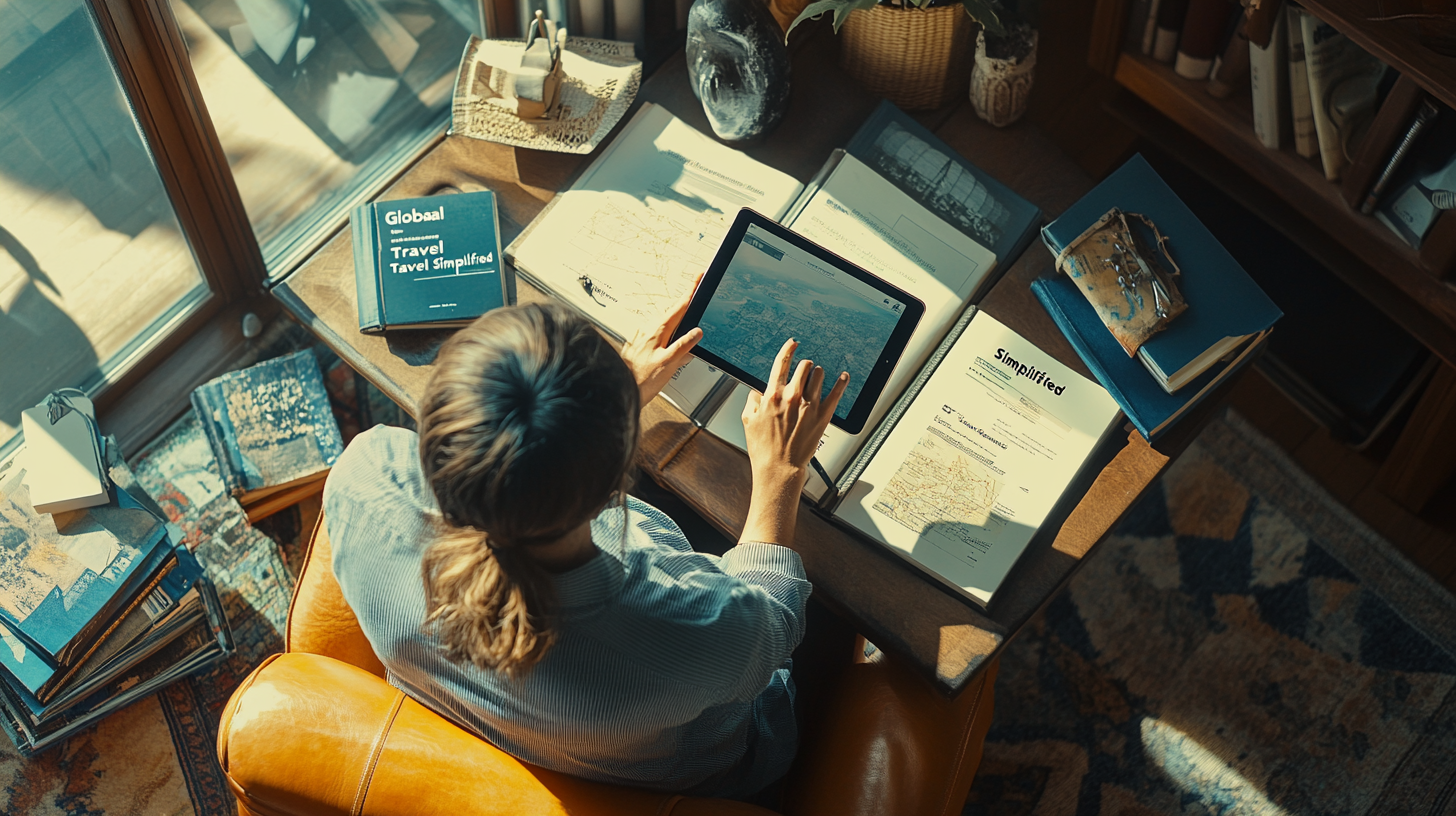
A well-structured itinerary is my secret weapon. I’ve learned to sandwich important meetings between direct flight options to minimize layover stress. Direct flights can be more expensive at times, but the reduction in fatigue, coupled with lower chances of missed connections, makes the investment worthwhile. Digital planners like TripIt Pro keep me on track, syncing my hotel details, flight times, and even local currency tips in one place.
According to a 2024 survey by the Global Business Travel Association, 40% of corporate travelers reported losing track of some expenses or confirming the wrong meeting times when juggling multiple third-party planning apps. Consolidating everything into a single platform helps avoid that confusion. I also create contingency plans for every key step. Flight delays aren’t uncommon these days, so I tend to book alternative routes or keep an eye on flexible policies.
If I’m heading to a region where self-driving might be unsafe or complicated, I book a car service in advance, especially if my schedule is packed. Nothing beats walking out of the terminal and seeing a driver with my name, ready to whisk me off to the hotel. That’s one less thing to worry about so I can focus on the main purpose of the trip.
4. Mind Local Customs & Etiquette

I’ve discovered that learning a few polite phrases in the local language can break the ice faster than anything else. When I’m traveling to Japan, phrases like “arigato gozaimasu” or a respectful bow can do wonders for cementing business relationships. Cultural nuances, like how to exchange business cards or whether to remove shoes before entering an office, also speak volumes about your commitment to understanding local norms.
Several international trade organizations indicate that being mindful of local etiquette can boost the success rate of business negotiations by up to 30%. I recall reading how even a small misstep—like extending your hand to someone who’s not used to physical contact—can shift the tone of an entire meeting. A little research goes a long way; understanding how people greet each other, address seniors, and conduct meetings sets the stage for deeper respect and collaboration.
I’ve also seen how local business customs can influence marketing or product decisions. One colleague of mine rebranded a product line after spending a few weeks meeting local distributors in Southeast Asia. They discovered preferences and cultural symbols that wouldn’t have been obvious without that face-to-face exposure.
5. Manage Expenses & Corporate Policy

When I first started traveling for work, I thought reimbursements were just a matter of turning in receipts at the end of a trip. Over time, I learned that thoroughly understanding my company’s travel policy can unlock perks like TSA PreCheck, lounge access, or coverage for faster border clearance programs. A travel policy is basically a blueprint for how to spend responsibly while still enjoying some comforts on the road.
Industry data shows that businesses offering clear travel guidelines see up to 25% fewer reimbursement disputes. In my own routine, apps like Expensify or Concur help me track every purchase—from coffee at the gate to the taxi ride downtown. Currency fluctuations can be sneaky, so I also keep an eye on exchange rates. Sometimes switching to a local payment method reduces fees, and I prefer using credit cards with travel rewards whenever possible.
Throughout my journeys, I’ve realized you don’t have to nickel-and-dime everything if you plan properly. Sticking to a well-defined budget means you can fully enjoy those business-class lounge perks when they’re allowed, without feeling you’re overspending. Transparency is key—both for your peace of mind and to maintain trust with your organization.
6. Prepare for Jet Lag & Health

Jet lag used to hit me hard, especially on long eastward flights. Now, I always try to adapt my sleep schedule a couple of days before departure—going to bed and waking up closer to my target time zone. Staying hydrated on the plane is non-negotiable: I avoid caffeine and alcohol during long-haul flights unless I want to feel groggy upon arrival.
A 2023 review in the Journal of Travel Medicine found that travelers who gradually shift their bedtime before departure reduce jet lag symptoms by nearly 30%. This aligns with what I’ve experienced—small changes at home can make a huge difference on the road. I also keep an eye on food safety by reading up on local dining recommendations. Street food is part of the experience in many destinations, but I place trust in spots buzzing with locals and maintaining obvious cleanliness standards.
From a broader perspective, healthy habits like mild exercise and mindful eating can keep energy levels stable for all those critical meetings. No one wants to close a deal while fighting an upset stomach, so I almost always have travel insurance that covers medical emergencies in case something unexpected happens abroad.
7. Pack Smart With Tech & Insurance
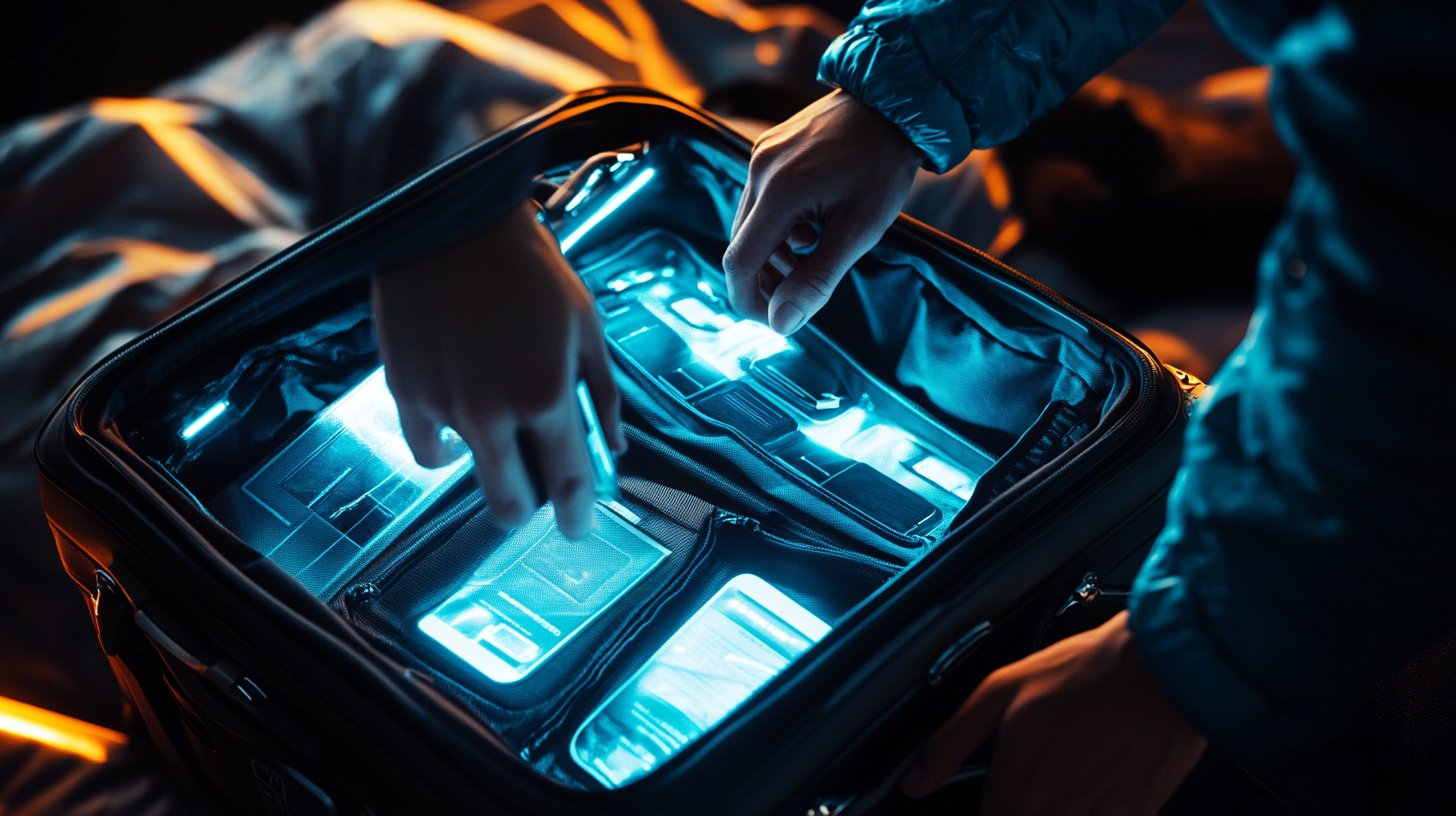
Over-packing was my downfall in the early days—I remember struggling with multiple suitcases while searching for my boarding pass. Now, I travel with a carry-on suitcase that fits the overhead bin and a small backpack for my essentials. Storing documents and valuables in a money belt or slim pouch has saved me from frantic pocket searches time and time again.
I also think tech gear can make or break a work trip. I keep a universal power adapter, a reliable power bank, and noise-canceling headphones. According to a survey by the Consumer Technology Association, 62% of business travelers rely heavily on mobile devices to stay connected with their teams back home. Having the right gadgets, plus backups like a mini Wi-Fi hotspot, means I’m always ready for video calls or last-minute presentations.
Of course, travel insurance is something I consider non-negotiable. I’ve personally benefited from last-minute flight cancellations and even a lost bag that showed up days later. The peace of mind alone is worth it. Though a private jet service might be the ultimate indulgence for some, I find commercial flights with a great seat selection often strike the perfect balance of comfort and cost.
8. Follow Up Post-Trip
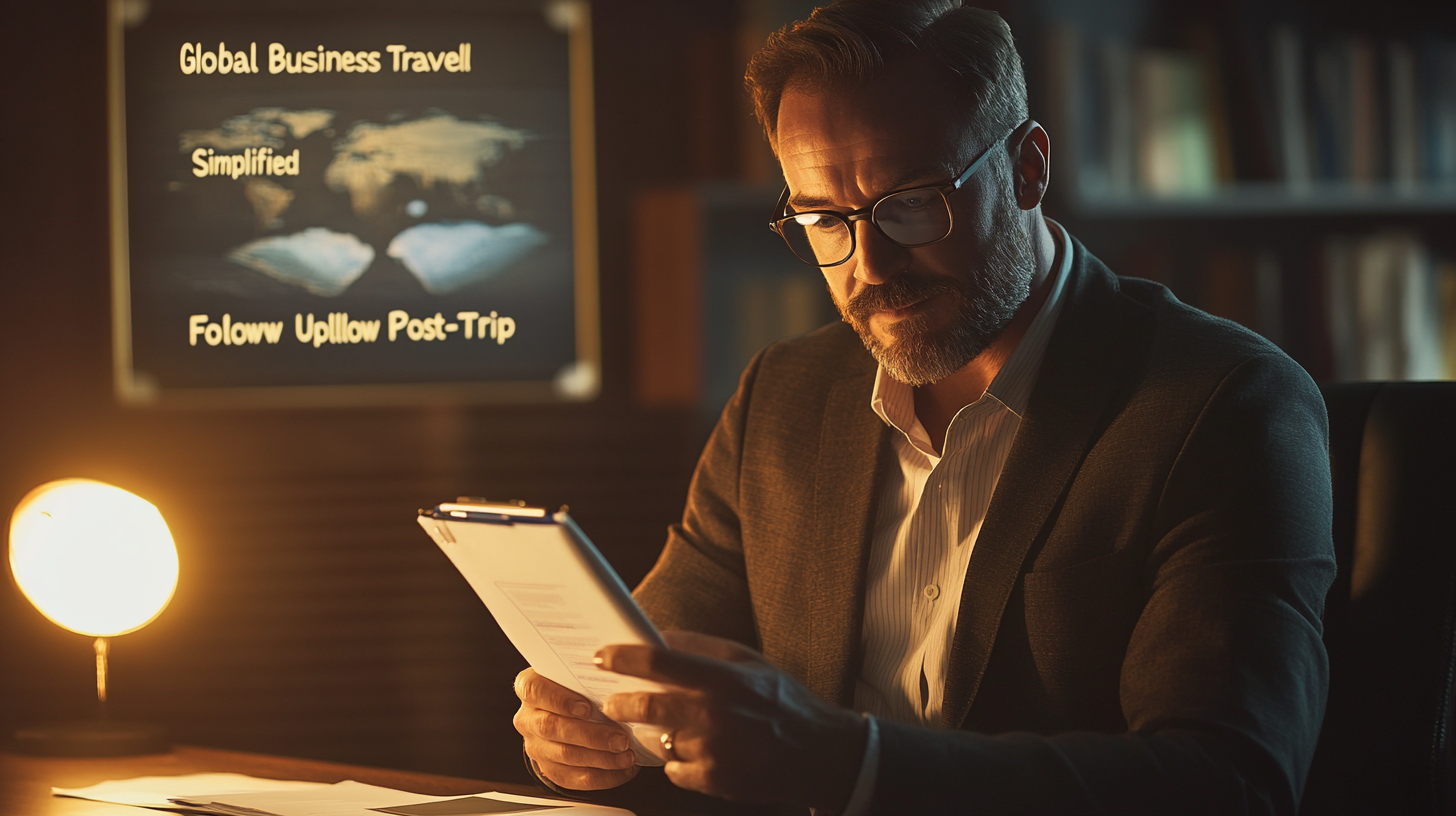
Post-trip routines can set the stage for smoother ventures in the future. As soon as I land back home, I sort my receipts, update digital expense reports, and forward any relevant details to my finance team. I also like to send quick follow-up emails to contacts I’ve met, whether it’s a potential partner or a new colleague, just to keep the conversation going.
I’ve observed that providing feedback to my company or team about the travel experience—airline service, hotel standards, local suppliers—can help refine future trips. If you have a travel department, sharing your honest insights can improve vendor alliances and might even unlock better rates next time. A solid follow-up process helps ensure that the investment made in international travel truly pays off in actionable results.
Plus, debriefing on what worked, what didn’t, and what you’d do differently is a great way to lock in lessons learned. Every destination teaches something new, and I find that documenting those insights keeps your global travels fresh and constantly evolving.
Final Thoughts

Global business travel is an art—one that blends thorough preparation, cultural sensitivity, and a dash of spontaneity. I’ve learned that no matter how carefully you plan, surprises will happen. The key is to stay flexible while keeping your main objectives clear. As the world becomes more interconnected in 2025, these journeys help us build bridges that transcend borders.
By thoughtfully managing each step—from passport checks to final reimbursements—you can ensure that the focus remains on what truly matters: building new relationships, expanding your market reach, and experiencing the richness of different cultures. In my firsthand view, organization and open-mindedness are the real wings that help business travel soar.
Ryder’s Take
At the end of the day, a great flight is about balancing comfort and strategy. I aim for a seat that offers a quick exit but still gives me enough room to relax. The window seat is my personal favorite, as it transforms long hauls into experiences you can savor rather than endure.
If there’s one overarching lesson I’ve taken away from all my flights, it’s that knowledge and insight can come from anywhere—from official advisories to local conversations at the airport café. Storing up those experiences helps me decide which tips are truly worth sharing.
Seat5A is where you can find more insights to elevate your travels.


